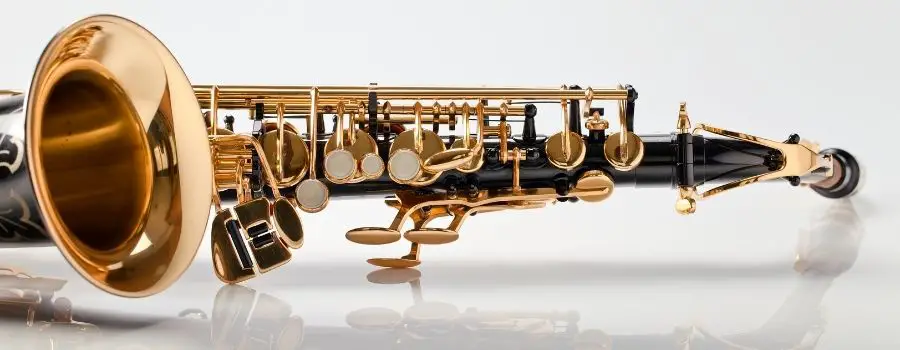
Early woodwind instruments (and current professional flutes) used to rely on the soft pads of our fingertips to seal the tone holes and change the pitches played. Since saxophone tone holes are way too large and spread out for our hands saxophone pads have become an essential component.
It wasn’t until college…a good 8 years of playing the saxophone before I became more familiar with the pads and resonators on my saxophone so I thought I’d put this article together and cover some of the things that I’ve learned over the years Everything from what saxophone pads are, to how to change them. Check it out!
Table of Contents
What Are Saxophone Pads?
Generally, saxophone pads are pieces of material (usually leather or synthetic wrapped around card or fiberboard) that saxophonists use to cover the tone holes on their saxophones. Pads come in all different shapes and sizes and each one is designed to fit a specific tone hole on your saxophone.
The pads of a saxophone are there to close the tone holes as the player presses the keys in order to change the pitch that they’re playing. Many of the pads also have small, plastic or metal pieces on them called resonators.
What Are Saxophone Pad Resonators?
Saxophone pad resonators are small, pieces of plastic or metal that are placed on some of the saxophone pads in order to help project the sound of the saxophone. They also serve as a way to protect the pad itself from dirt and debris.
You’ll notice that some saxophones have resonators on all of the pads while others only have them on some of the pads. There is no right or wrong way to do this, it simply comes down to preference.
It’s just another way that players can change their sound to make it uniquely “them.” Players who really want to finesse their sound can go even further by selecting resonators that are made from plastic, metal, or precious metals (gold.)
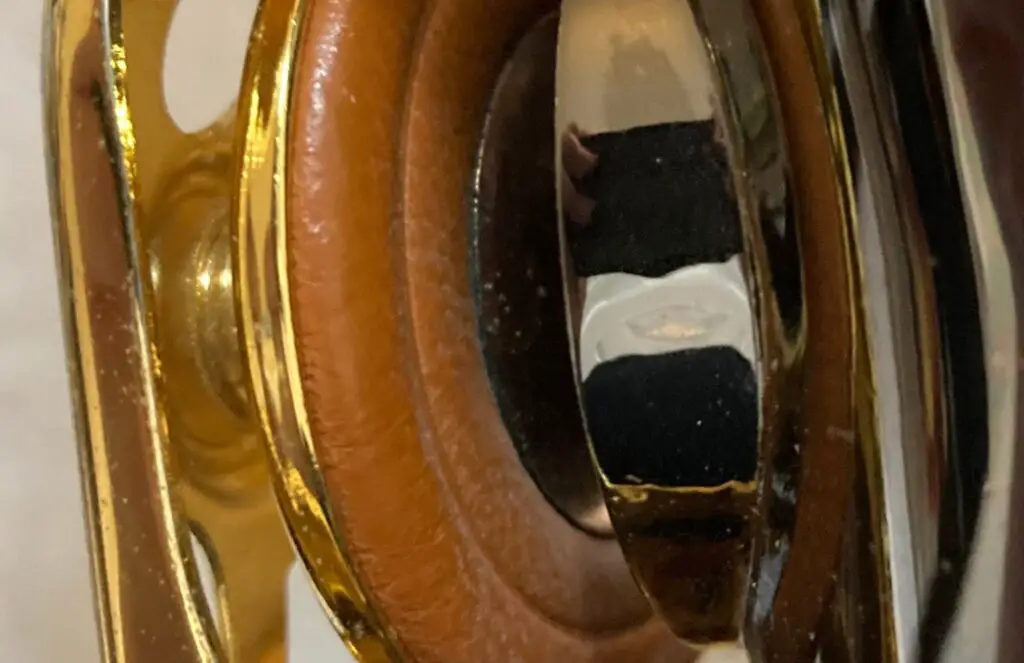
What Are Saxophone Pads Made Of?
Typically, saxophone pads are made out of leather wrapped pieces of card or fiberboard, but they can also be made from synthetic materials (faux leather) or used in combination with each other.
Many students and beginner saxophonists opt for synthetic saxophone pads because they are a more affordable option. As they become more advanced and serious about their playing, they often switch to leather saxophone pads.
- Leather – Leather saxophone pads are generally considered to be the best quality since they provide the best seal and produce the best sound. However, they are also the most expensive option and require more maintenance than synthetic saxophone pads.
- Synthetic – Synthetic saxophone pads are a more affordable option and are less likely to stick than leather saxophone pads. However, they don’t provide as good of a seal and don’t produce the same quality of sound.
If you’re not sure which type of saxophone pad is right for you, it’s always a good idea to talk to your teacher or a professional saxophonist. They can help you make the best decision for your specific needs.
Most players will get along perfectly fine with whatever their instrument came with. As your pads begin to wear out and need to be replaced, then you can start to experiment with different materials and resonators.
How Long Do Saxophone Pads Last?
In general, a saxophone that is played moderately and is well maintained can have pads that last up to ten years. Excessive playing, smoking, eating or drinking before or while playing can greatly reduce the life of a saxophone pad.
As a general rule of thumb, it’s a good idea to inspect your pads every six months or so and replace them as needed. If you play your saxophone regularly, you may need to replace them more often.
If you notice that your pads are starting to stick or that the sound of your saxophone is changing, it’s definitely time for new pads.
The good news is that saxophone pads are relatively inexpensive and easy to replace. You can usually do it yourself with a little bit of time and patience.
If you’re not comfortable doing it yourself, you can always take it to your local saxophone technician or shop. They’ll be able to replace the pads for you quickly and affordably.
How Do I Know If A Saxophone Pad Is Bad?
There are a few different signs that a saxophone pad isn’t working like it should and needs to be replaced.
- Pads are sticking
- Discoloration
- Mold
- Sound of your saxophone has changed
- If you can see light shining through the pads, that means they’re no longer sealing properly
- The pad is hard or crunchy
- Visibly damaged (torn, scuffed, any cardboard is visible)
- Resonator(s) has fallen off or is loose
Now, just because you see some of these things doesn’t mean that the bad immediately has to have the pads replaced. As long as you’re getting a good seal then playing should not be affected. However, these are definitely signs that the bad is on its last legs.
Which Pads Usually Go Bad The Quickest On A Saxophone?
On a saxophone, the pads that get used the most will go bad the quickest and most often. While most saxophone keys are open until pressed keys, such as G# and Eb are held closed by a spring until the key is pressed to raise it.
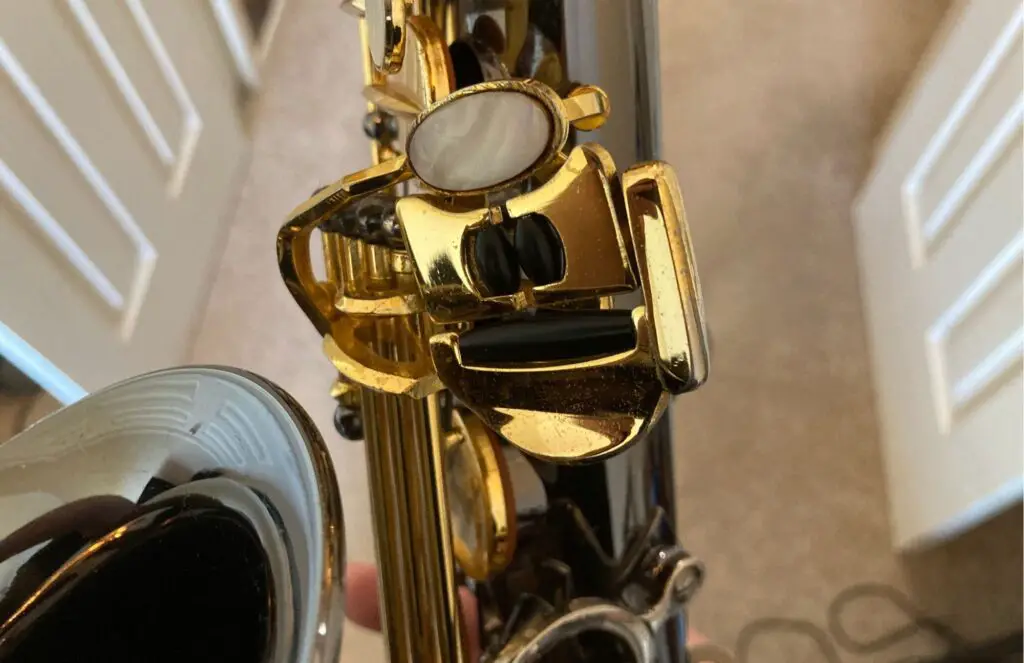
This constant pressure on the pad can wear out the soft pad more quickly and it allows for moisture to build up around the key.
As the moisture slowly dries, residue is left behind that makes the key sticky.
Other saxophonists note that the lower “bell” keys (low C, B, and Bb) will also go bad relatively quickly since they are large and can collect a lot of moisture.
Pad savers (mentioned below) don’t typically reach these key either, so they don’t get as much moisture absorbed away as the other keys.
Why Do Saxophone Pads Stick?
Saxophone pads will stick because of residue that builds up around where the pad seals to the tone hole. This residue, usually from food and drinks that you consume before playing, builds up inside the ring of the pad and sticks to the tone hole rim.
Sticky residue is the main culprit, but there are other things to be on the lookout for:
- Sometime the key itself gets bent and the pad won’t sit flat
- The pad is torn and the edges of the tear are grabbing the tone hole
Again, most often the key is sticking due to residue. But, if you have dropped your sax…even if you caught it before it hit the ground…or you have a new, pressure fit saxophone case, check to make sure none of the keys or rods have bent. Even a light bend will prevent the pad from seating correctly over the tone hole.
How Do You Un-Stick Saxophone Pads?
The good news is that, most of the time, you can un-stick saxophone pads yourself with some patience and a few common household items:
- Isopropyl Alcohol (Rubbing Alcohol) – This will help to break down the residue and make it easier to remove.
- Cotton Swabs or Cotton Balls – You’ll use these to apply the rubbing alcohol and to clean off the residue.
- Old Toothbrush – This will help to remove any stubborn residue.
- Soft Cloth – You’ll use this to wipe down the saxophone key and pads once you’ve removed the residue.
- Music Shop – If you’re not comfortable doing it yourself, you can always take it to your local saxophone technician or shop. They’ll be able to replace the pads for you quickly and affordably.
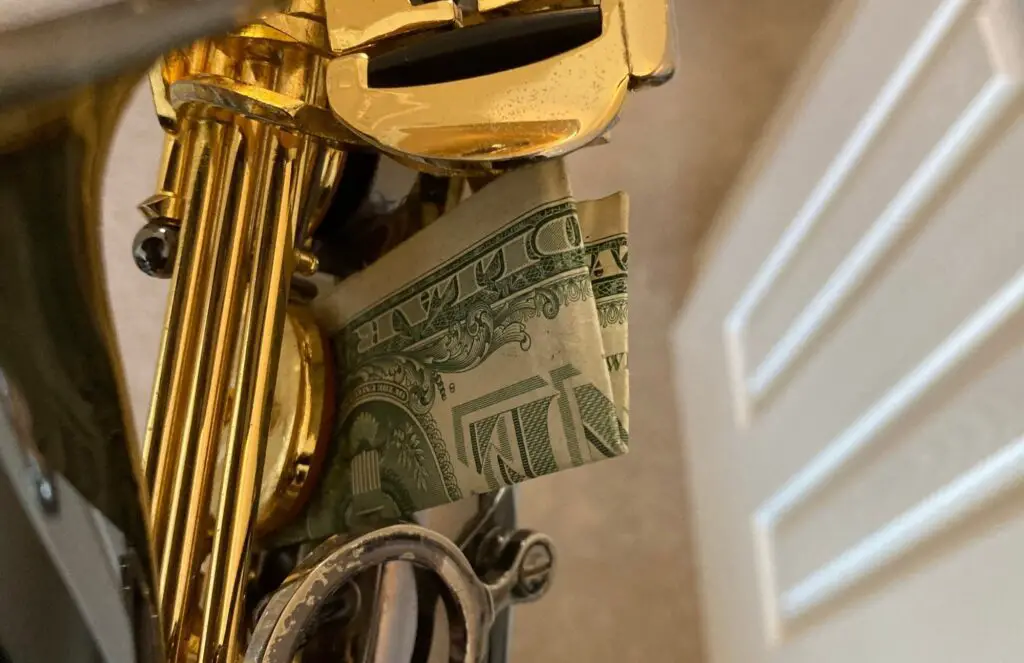
The Old Dollar Bill/Cigarette Paper Trick
Those tips work great when you have time to properly inspect and clean your pads…but what if you’re in the middle of playing. That’s where experience comes in.
If you are in the middle of a concert and a pad start sticking, keep a few pieces of cigarette rolling paper (or similar, non-wood fiber paper) in your pocket or on your stand can be a temporary fix. Just slide the paper under the pad that is sticking and press it down a few times. This will quickly absorb any moisture that’s built up and get the pad working again.
You can also use a dollar bill (or other denomination) since US money is made from a blend of 75% cotton and 25% linen. It will also absorb any moisture that has built up. We used to call this “giving an offering to the sax gods” in jazz band. Just don’t rip the bill as you pull it from under the key.
How Do You Prevent Saxophone Pads From Sticking?
Generally, the best way to keep your pads from sticking is to not eat, drink, or smoke anything while playing or immediately before playing. It’s always a good idea to rinse out your mouth before playing, especially if you had eaten recently.
Another way to prevent saxophone pads from sticking is to use a pad saver. A pad saver is essentially a small tube of absorbent brush like material that goes over the end of the saxophone and soaks up moisture as you play. Think of a very large pipe cleaner.
It is also highly recommended to run a cleaning swab through your saxophone a few times immediately after playing. This cloth, usually terry-cloth or similar, will take the bulk of the moisture out of your sax and let the pad saver do its job better.
Can Saxophone Pads Be Softened?
Usually, leather pads will soften over time with use, but you can sometimes speed up the process by using a pad softener. It should be noted that some pads cannot be softened and those should be replaced.
In the end, all the effort and money you’d put into various types of pad softeners would equal or exceed the price to just replace the pad. But, some people do like to take the DIY approach and salvage very bit of a saxophone they can.
There are several saxophone-specific pad softeners on the market, or you can use a generic leather conditioner.
Conditioners to Try:
Foam Pad Conditioner – This is a relatively new product that seems to work well.
Liquid Pad Softener – This is a generic leather conditioner that works well and is relatively inexpensive.
Cream Pad Softener – This is another generic leather conditioner that works well and is relatively inexpensive.
Generic Conditioners to Avoid:
Oils – Many oils will gum up saxophone pads and never really soak in. Those that do soak in can break down the fibers of the leather and warp the card board base the leather is wrapped in…now the pad won’t seat correctly on the tone hole.
Waxes – Like oils, waxes will gum up saxophone pads and never really soak in. As the wax builds up it will prevent the pad from slotting into the rim of the tone hole, leading to leaks.
Are Pad Savers Good For Saxophones?
Pad savers are designed to absorb moisture that may be left in your saxophone after playing and keeps it from collecting in the tone holes and pads. Whether they accomplish this or end up doing more harm than good is debated among sax players.
From my experience, most every player I knew in college and beyond uses them, but checking out some of the sax forums, there is a lot of people that think they might not be a great addition to your saxophone kit.
The arguments FOR using pad savers are:
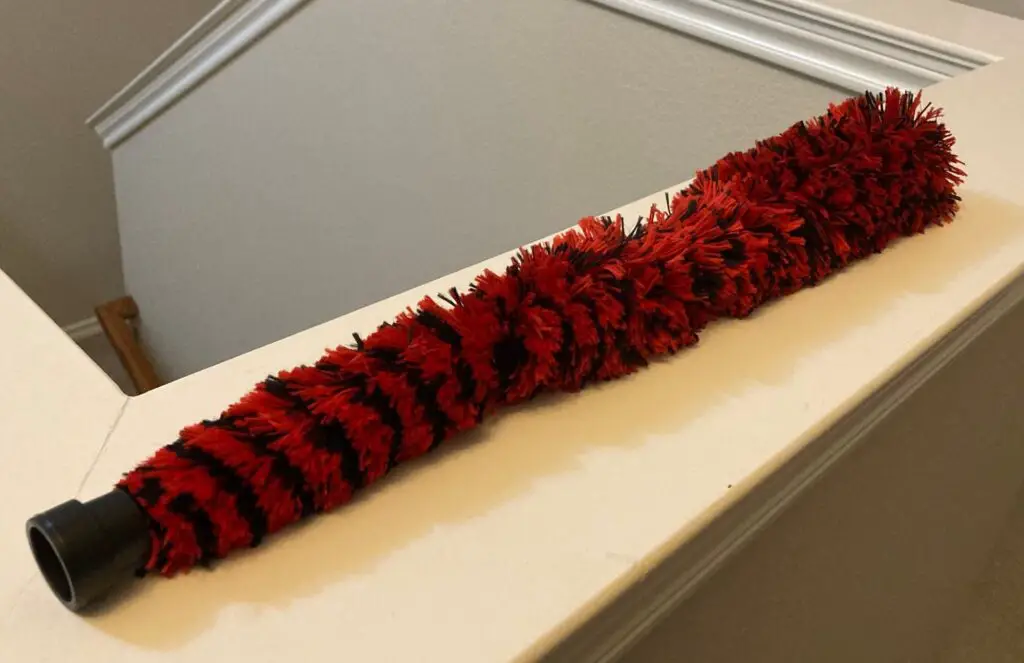
- They do help to absorb moisture
- They can extend the life of your saxophone pads by keeping them dry
- They are relatively inexpensive
The arguments AGAINST using pad savers are:
- They can become breeding grounds for mold and mildew. Many are made of naturally mold resistant material, but some of the cheaper brands aren’t
- If not properly cleaned, they can transfer dirt and grime into your saxophone
- They can be difficult to remove and reinsert, this is especially true if the cap comes off. In this case a pair of pliers or grips is needed to get it out…not great just before a concert
- If left in too long, they can cause the saxophone pads to dry out and crack
- Some claim that the brush material can get lodged into the pad and gradually damage it…sort of like an ingrown hair
At the end of the day, it’s up to you whether or not to use a pad saver. If you do decide to use one, make sure to remove it after playing and allow your saxophone to air out properly and make sure you buy a quality one.
How Much Does It Cost To Replace Saxophone Pads?
Generally speaking, you can expect to pay anywhere from $100-$400 to have your saxophone re-padded. This price will increase depending on the number of pads you replace and if other work is needed, such as replacing springs or adjusting the action.
The price to replace saxophone pads will depend on a few factors:
- Type of Saxophone – Soprano and Alto saxes will be a little cheaper than tenors. Bari and larger will be the most expensive.
- Type of Pads – Material will cause the price to fluctuate slightly, as will getting pads with resonators.
- Number of Pads Being Replaced – Obviously, the more pads that are being replaced, the more money you will be spending.
- Who is Doing the Work – The prices above are averages…different companies will charge different prices. Location will also factor in, but it should still be within a few dollars of what’s mentioned here.
If you are comfortable doing the work yourself, you can purchase a saxophone pad set for around $60-$100 and replace the pads yourself. This is a fairly easy job that just about anyone can do with a little patience and the right tools.
Final Thoughts
Just like tires on a car, saxophone pads are going to wear out and need replacing. Luckily, it won’t have to happen that often as long as you take good care of your horn and swab it out when you’re finished playing.
Just about any music shop will be able to replace pads for you…or you could tackle it yourself. Having the professionals do it means you know it will be done right, but you’re going to shell out a few hundred bucks…doing it yourself will save you a bunch of money, but there is a little skill involved that may be daunting for newer players or people that are doing it for the first time.

